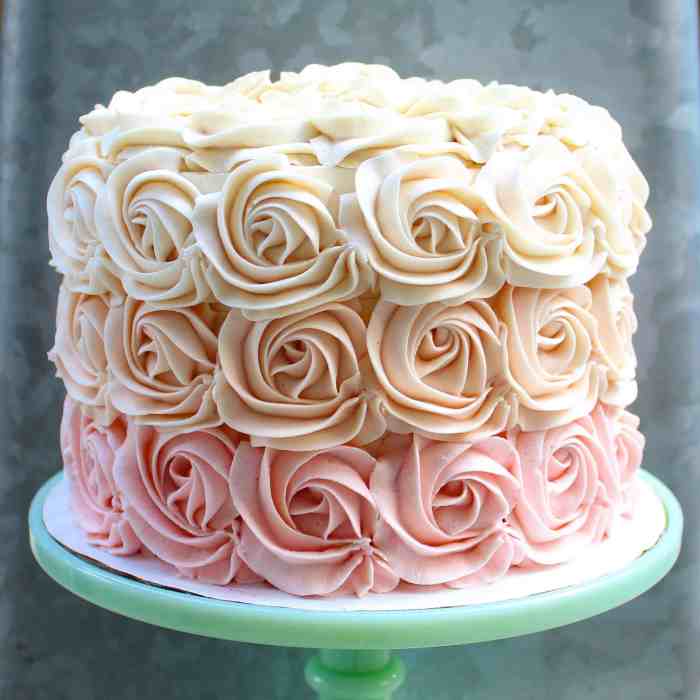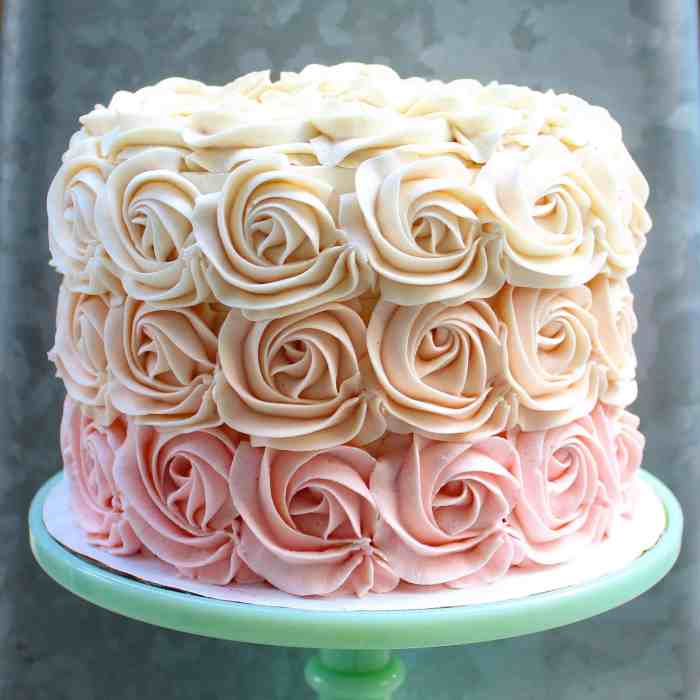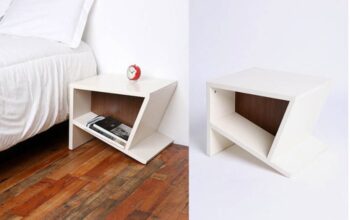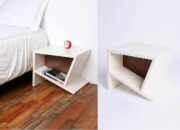How to decorate your cake with butter icing is a skill that can transform a simple baked good into a culinary masterpiece. From smooth, elegant finishes to intricate designs, butter icing offers endless possibilities for creating visually stunning and delicious cakes.
Whether you’re a seasoned baker or a novice enthusiast, this guide will equip you with the knowledge and techniques to elevate your cake decorating game.
We’ll delve into the intricacies of preparing butter icing, exploring different types and methods for achieving the perfect consistency. Then, we’ll embark on a journey through essential cake decorating techniques, mastering piping, smoothing, and adding texture. Finally, we’ll unleash our creativity with decorative elements, transforming our cakes into edible works of art.
Adding Texture and Color

Adding texture and color to your buttercream icing can transform a simple cake into a work of art. Whether you’re aiming for a rustic look or a sleek and modern design, these techniques allow you to express your creativity and elevate your cake decorating skills.
Adding Texture
Adding texture to your buttercream icing is a fun and easy way to add visual interest to your cakes. You can create a variety of textures using simple tools found in your kitchen.
- Using a Comb:A comb can be used to create a rippled effect on your icing. Simply drag the comb across the surface of the icing, applying gentle pressure. You can experiment with different comb sizes and spacing to achieve different looks.
- Using a Fork:A fork can be used to create a textured surface that resembles a honeycomb or a quilted pattern. Simply press the tines of the fork into the icing, creating small indentations. You can use a fork to create a more rustic look or to add subtle texture to your icing.
- Using a Spatula:A spatula can be used to create swirls or peaks in your icing. Simply spread the icing onto the cake and then use the spatula to create the desired texture. You can use a spatula to create a more modern look or to add a touch of elegance to your cake.
Creating Color Gradients, How to decorate your cake with butter icing
Color gradients add a touch of sophistication and visual appeal to your buttercream icing. They create a seamless transition from one color to another, adding depth and dimension to your cake designs.
- Using a Palette Knife:Start by dividing your icing into separate bowls, each with a different color. Use a palette knife to gently swirl the colors together, creating a marbled effect. This technique is best for creating subtle gradients.
- Using a Piping Bag:Fill separate piping bags with different colors of icing. Pipe the colors onto the cake in a staggered pattern, creating a gradient effect. You can use a variety of piping tips to achieve different looks.
- Using an Airbrush:Airbrushing allows you to create smooth and even gradients. Fill an airbrush with a light color of icing and spray it onto the cake in a thin layer. Then, fill the airbrush with a darker color and spray it onto the cake, overlapping the first layer.
Continue adding layers of color until you achieve the desired gradient.
Adding Food Coloring
Adding food coloring to your buttercream icing is a simple way to create a wide range of colors.
- Liquid Food Coloring:Liquid food coloring is the most common type of food coloring used for buttercream icing. It’s easy to use and mixes well with the icing. Simply add a few drops of food coloring to your icing and mix until the color is evenly distributed.
- Gel Food Coloring:Gel food coloring is more concentrated than liquid food coloring, so you need to use less of it. It also tends to produce brighter and more vibrant colors. Gel food coloring is ideal for achieving bold and precise colors.
- Powdered Food Coloring:Powdered food coloring is a good option for achieving a matte finish. It’s also a good choice for creating vibrant colors that won’t bleed into the icing. To use powdered food coloring, simply mix a small amount of the powder with a few drops of water to create a paste.
Then, add the paste to your icing and mix until the color is evenly distributed.
Achieving a Marbled Effect
A marbled effect adds a touch of whimsy and sophistication to your buttercream icing. It’s a fun and easy way to create a unique and eye-catching design.
- Using a Swirl Technique:Divide your icing into separate bowls, each with a different color. Use a spoon or a palette knife to swirl the colors together in a bowl. Then, spread the marbled icing onto your cake using a spatula or a piping bag.
- Using a Toothpick:Divide your icing into separate bowls, each with a different color. Drop small dollops of each color onto the cake, creating a random pattern. Then, use a toothpick to gently swirl the colors together, creating a marbled effect.
- Using a Fork:Divide your icing into separate bowls, each with a different color. Use a fork to create streaks of color on the cake. Then, use the fork to gently blend the colors together, creating a marbled effect.
Texturing Techniques and Visual Outcomes
| Technique | Visual Outcome |
|---|---|
| Comb | Rippled effect |
| Fork | Honeycomb or quilted pattern |
| Spatula | Swirls or peaks |
| Swirl Technique | Marbled effect |
| Toothpick | Marbled effect |
| Fork | Marbled effect |
Decorative Elements: How To Decorate Your Cake With Butter Icing

Buttercream icing is incredibly versatile and allows you to create stunning decorative elements that elevate your cakes to new heights. From delicate flowers to intricate swirls, the possibilities are endless.
Creating Decorative Elements
Buttercream is an excellent medium for creating a wide range of decorative elements. To achieve sharp edges and intricate details, it’s essential to work with a firm buttercream that holds its shape well.
Piping Tips and Techniques
- Flowers:Use round, star, or petal tips to create various flower shapes. For realistic petals, use a petal tip and gently squeeze the buttercream, pulling the tip slightly upwards to create a gradual taper.
- Leaves:Utilize leaf-shaped tips to pipe leaves. Apply gentle pressure and twist the tip as you move along the desired shape to create realistic veins.
- Swirls:Round or star tips are ideal for creating swirls. Pipe a spiral starting from the center and gently move outwards. For a more pronounced swirl, use a larger tip.
Table of Decorative Elements
Here’s a table showcasing some popular decorative elements, corresponding piping tips, and techniques:| Decorative Element | Piping Tip | Technique ||—|—|—|| Roses | Round or petal tip | Pipe a spiral, then use a petal tip to shape the petals.
|| Daisies | Star tip | Pipe a center dot, then use a star tip to create petals. || Leaves | Leaf tip | Pipe a curved line, then use a leaf tip to create veins. || Swirls | Round or star tip | Pipe a spiral starting from the center.
|
Creating a Simple Buttercream Flower
Here’s a step-by-step guide for creating a simple buttercream flower:
1. Prepare the buttercream
Ensure your buttercream is firm and holds its shape well.
2. Choose a piping tip
Select a round or petal tip.
3. Pipe the center
Use a small amount of buttercream to pipe a center dot.
4. Shape the petals
Butter icing is a versatile option for cake decorating, allowing you to create smooth, elegant finishes or whimsical designs. If you’re looking for inspiration, check out this guide on how to decorate a Wilton pony cake , which showcases intricate piping techniques and colorful details.
You can then apply these skills to your own butter icing creations, whether you’re aiming for a classic look or a more playful approach.
Start at the center and pipe a spiral, gently pulling the tip upwards to create a gradual taper.
5. Finish the flower
Butter icing is a versatile choice for cake decorating, allowing you to create smooth, clean surfaces or intricate designs. For a fresh, citrusy twist, consider incorporating lime into your design. You can find inspiration and learn how to decorate with lime on cake by checking out this helpful guide: how to decorate with lime on cake.
Once you’ve mastered the basics, you can experiment with lime zest, lime slices, or even lime-infused buttercream for a unique and flavorful touch.
Repeat step 4 to create additional petals.
Summary

With a little practice and a touch of creativity, you’ll be amazed at the beautiful cakes you can create using butter icing. So, gather your ingredients, choose your favorite piping tips, and let your imagination run wild. Remember, cake decorating is a journey of exploration and self-expression.
Enjoy the process, experiment with different techniques, and most importantly, have fun!
Key Questions Answered
What is the best type of butter icing for beginners?
American buttercream is a popular choice for beginners due to its forgiving nature and ease of use. It’s also relatively stable and holds its shape well.
How do I prevent my buttercream from becoming too runny?
If your buttercream is too runny, you can add a bit more powdered sugar or chill it in the refrigerator for a few minutes to thicken it up.
What are some tips for achieving sharp edges on my buttercream decorations?
Use a piping tip with a sharp, defined edge, and ensure your icing is firm enough to hold its shape. Also, practice piping on a piece of parchment paper before decorating your cake.













